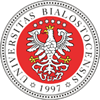Proszę używać tego identyfikatora do cytowań lub wstaw link do tej pozycji:
http://hdl.handle.net/11320/8776| Tytuł: | D’une horde de barbares à une horde de pensées – à propos de quelques quantifieurs nominaux figuratifs d’origine militaire en français et en polonais |
| Inne tytuły: | From ‘une horde de barbares’ to ‘une horde de pensées’ – about some nominal quantifiers of military origin in French and Polish |
| Autorzy: | Izert, Małgorzata |
| Słowa kluczowe: | collocation quantification quantifieur nominal quantité indéterminé collocation quantification substantive quantifier undetermined quantity |
| Data wydania: | 2019 |
| Data dodania: | 3-lut-2020 |
| Wydawca: | Wydawnictwo Uniwersytetu w Białymstoku |
| Źródło: | Białostockie Archiwum Językowe, nr 19, 2019, s. 125-139 |
| Abstrakt: | Le but de cette étude est l’analyse des collocations quantitatives qui constituent en français la suite DÉT. N1 de N2 et en polonais N1 suivi de N2 au génitif. Le DÉT. N1 DE (N1 en polonais) est un quantifieur nominal d’origine militaire. L’inventaire des quantifieurs nominaux qui sont l’objet de cette étude comporte cinq noms français renvoyant, au sens propre, à une unité militaire tactique (une armée, un bataillon, une horde, une légion, un régiment) et au sens figuré à un (très) grand ensemble ou rassemblement de personnes, d’animaux ou d’objets concrets (par ex. une armée d’agents secrets, des bataillons de casseroles, une horde de chiens sauvages, une l´egion de fourmis, un régiment de domestiques, etc.) ou encore à une (très) grande quantité indéterminée d’objets abstraits (par ex. une armée de pensées, une horde de sentiments, etc.) et leurs correspondants polonais (par ex. armia pielęgniarek, batalion butelek, legiony owadów, hordy myśli, etc.). Nous analyserons les propriétés syntaxiques et sémantiques de ce type de quantifieurs nominaux ainsi que leur combinatoire. This article presents the analysis of collocations that act as indicators of large undefined quantity. They have a structure in French DÉT. N1 de N2 and in Polish N1 N2 (where N2 is used in genetivus). D´ET. N1 DE (N1 in Polish) is nominal quantifier of military origin. The set of nominal quantifiers which are the subject of this analysis consists of 5 French nouns denoting in a literal sense a military unit (e.g. une armée, un bataillon, une horde, une l´egion, un régiment) and in a figurative sense large group of persons or cluster of people, animals, concrete objects (e.g. une armée d’agents secrets, des bataillons de casseroles, une horde de chiens sauvages, une l´egion de fourmis, un régiment de domestiques, etc.) or very large undefined quantity of abstract objects (e.g. une armée de pensées, une horde de sentiments, etc.) and the corresponding Polish collocations (e.g. armia pielęgniarek, batalion butelek, legiony owadów, hordy myśli, etc.). We also present the analyse of syntactic and semantic features of quantifiers and nouns that most often connect with them. |
| Afiliacja: | Uniwersytet Warszawski |
| E-mail: | izert@uw.edu.pl |
| URI: | http://hdl.handle.net/11320/8776 |
| DOI: | 10.15290/baj.2019.19.08 |
| ISSN: | 1641-6961 |
| metadata.dc.identifier.orcid: | 0000-0002-0212-3966 |
| Typ Dokumentu: | Article |
| Występuje w kolekcji(ach): | Białostockie Archiwum Językowe, 2019, nr 19 |
Pliki w tej pozycji:
| Plik | Opis | Rozmiar | Format | |
|---|---|---|---|---|
| BAJ_19_2019_ M_Izert_ D'une _horde_de_barbares_`a_une_horde_de_ pensées.pdf | 2,27 MB | Adobe PDF | Otwórz |
Pozycja jest chroniona prawem autorskim (Copyright © Wszelkie prawa zastrzeżone)

